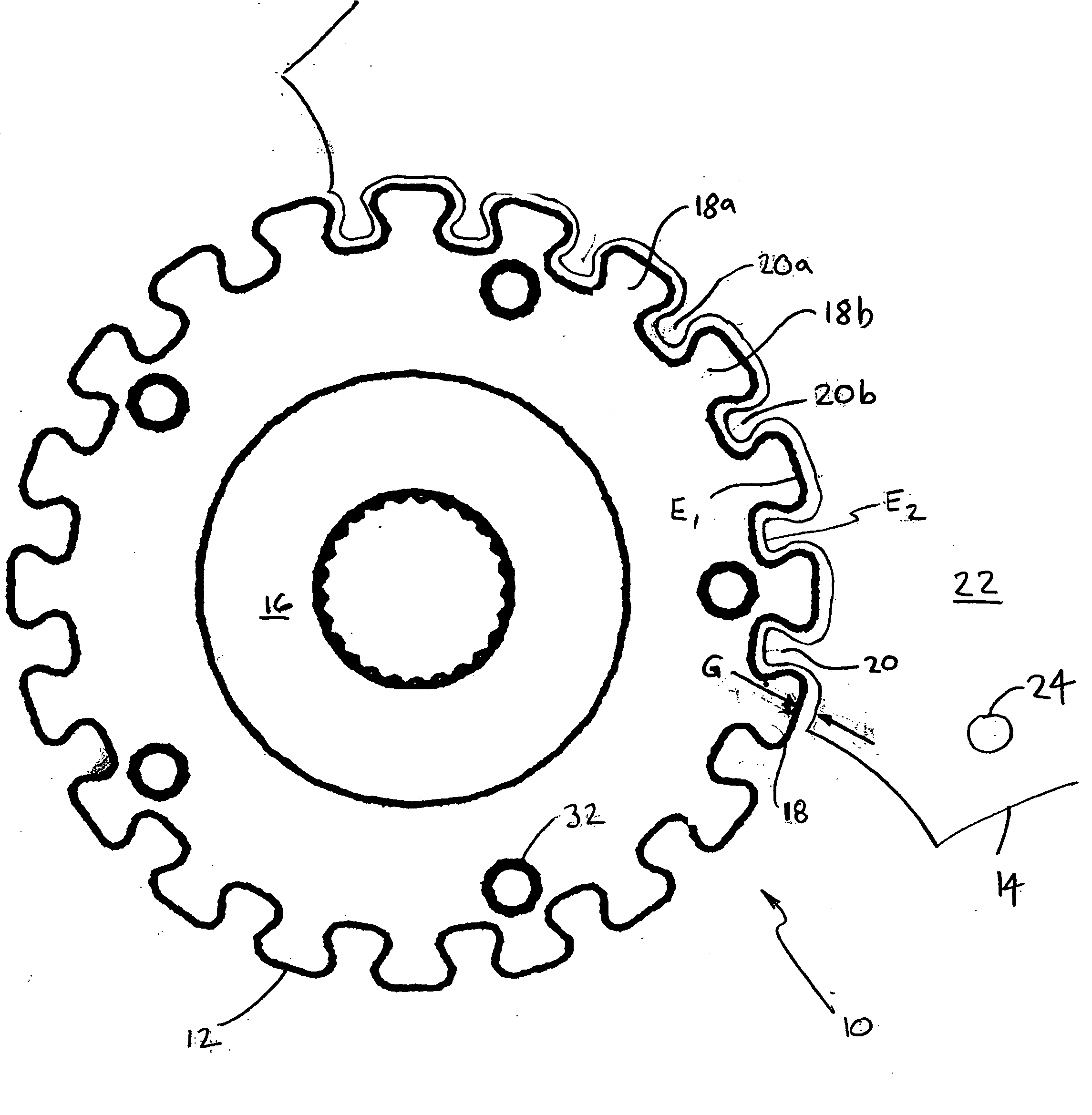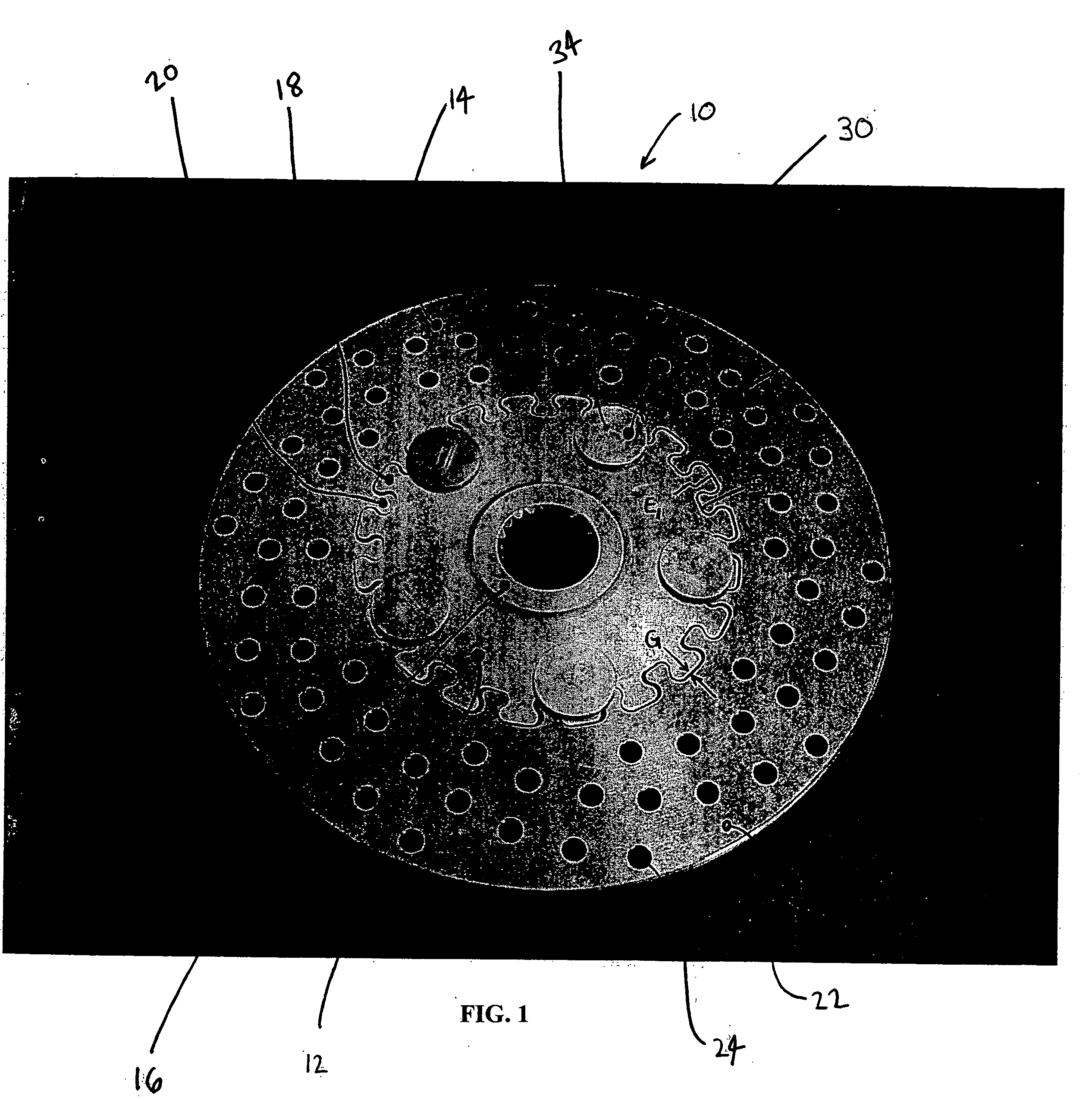Floating disc brake assembly with interlocking hub and rotor
a technology of floating disc brakes and hubs, applied in the field of disc brakes, can solve the problems of increasing maintenance costs, deteriorating the performance of the entire disc brake assembly, and limited thermal expansion of the rotor during braking, so as to reduce one or both of failures
- Summary
- Abstract
- Description
- Claims
- Application Information
AI Technical Summary
Benefits of technology
Problems solved by technology
Method used
Image
Examples
Embodiment Construction
[0030] Referring now to FIG. 1, a first view is provided of a disc brake assembly 10 comprising a brake hub (hereinafter, hub) 12 and a rotor 14. More specifically, both the hub 12 and the rotor 14 are generally semi-circular in shape, with the rotor 14 coupled to, and disposed circumferentially around, the hub 12. As such, the rotor 14 annularly surrounds the hub 12, whereby the hub 12 and the rotor 14 are concentrically arranged about a common axis. Accordingly, the hub 12 and the rotor 14 are floatably connected to one another such that an axis of rotation of the hub 12 is generally the same as, or at least generally aligned with, an axis of rotation of the rotor 14, and vice versa.
[0031] In floating disc brake assemblies 10, the hub 12 and the rotor 14 are separate components. In various embodiments, they can be fabricated or formed from separate materials. And they can be chosen from conventional forms and materials commonly used in braking applications. For example, they can ...
PUM
 Login to View More
Login to View More Abstract
Description
Claims
Application Information
 Login to View More
Login to View More - R&D
- Intellectual Property
- Life Sciences
- Materials
- Tech Scout
- Unparalleled Data Quality
- Higher Quality Content
- 60% Fewer Hallucinations
Browse by: Latest US Patents, China's latest patents, Technical Efficacy Thesaurus, Application Domain, Technology Topic, Popular Technical Reports.
© 2025 PatSnap. All rights reserved.Legal|Privacy policy|Modern Slavery Act Transparency Statement|Sitemap|About US| Contact US: help@patsnap.com



